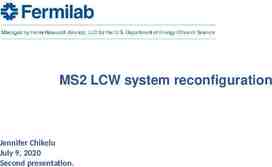1 TECHNICAL WRITING vs. ACADEMIC WRITING
31 Slides530.00 KB
1 TECHNICAL WRITING vs. ACADEMIC WRITING
TYPES of WRITING 1. PERSONAL 2. ACADEMIC 3. PROFESSIONAL
3 PERSONAL WRITING o Purpose/Objective: o to entertain to inform Evaluation: desired emotional response informed
4 PERSONAL WRITING o Graphics: o emoticons text-messaging lingo Formats: e-mail letters journals text messages
5 PERSONAL WRITING o Audience: o equal knowledge friends colleagues Informality
6 TECHNICAL WRITING vs. ACADEMIC WRITING
*AUDIENCES* o o o o o o o Specific Audiences boss supervisor team committee politicians bank officers general public TC o o o General Audience generic reader teacher perhaps fellow students AW
*AUDIENCES* 1 Document 1 Reader: 1 Document Many Readers: (Many Readers Many Needs) o o o o o o o o “food chain” boss, supervisor team engineers workers politicians bank officers general public TC (1 Reader 1 Need) o teacher AW
PURPOSES o o o o Purpose Writing Situation Objective Why was the document written?
PURPOSES o o o o o Situation-Oriented see a need — address a need internal motivation professional motivation outcome-oriented: to get something accomplished Assignment-Oriented o passive (vs. active) o given a topic, test o given an assignment o external motivation o scholastic motivation o grade-oriented TC grade, g.p.a., degree AW
EVALUATION CRITERIA o o o o Success satisfaction of the needs of all readers something was done informed persuaded TC o o o o o Success correct answer right information unity, coherence support, detail grammar AW
APPLICATIONS Real-World Applications o case studies o illustrative scenarios o operations management o for a job o for a raise or promotion o for a bid practical TC o o o o o o o College Application “academic” writing essays essay exams for academics for grade for degree “show what you know” demonstrative AW
DISCIPLINES o o o o Across Disciplines “interdisciplinary” computer sciences psychology mixture of: history math science technology o Single Discipline “discipline-specific” o TC literary data for an English paper historical information on a history paper psychological ideas on a psychology test rarely a mixture AW
*PAGE DESIGN* o Paragraphs o o o o o o o o o o o 6-10 lines vary lengths for visual Paragraphs White Space Columns Headings Lists Graphics Varying Fonts Use of Color Relative Spacing Relative Margins Relative Justification o NO o o o TC Minimum of 3-5 sentences No maximum length White Space Columns Headings Lists Graphics Varying Fonts Use of Color Double Spacing Equal Margins Left Justification AW
COMPONENTS o o o o o Oral, Visual, Written produce documents present documents write to be read write to be seen write to be heard o o o o o TC Written infrequent oral and visual components predominant written component write to be read by teacher write to be graded not to be seen or heard AW
GRAPHICS o o o o o o o tables charts graphs diagrams photographs maps blue prints o o TC uncommon photographs AW
FORMATS o o o o o o o o o o memos e-mails letters cover letters resumes proposals manuals portfolio abstracts reports o o essay questions essays based on the rhetorical strategies formal informal TC Description Narration Illustration Process-Analysis Division-Classification Comparison-Contrast Definition Cause-Effect Pro-Con Argument AW
GRAMMAR o o o o o o o o Grammar-less visual-oriented grammar less important fragments permissible active voice descriptive writing concise sentences spelling! proofread! TC o o o o o o o o Grammar-full written-oriented grammar key sentence errors avoided active voice descriptive writing concise sentences spelling! proofread! AW
19 CONCLUSIONS o Technical Communication: o Practicality in the employment world Real-World application Academic Writing: Demonstration of knowledge Limited to academia
20 CONCLUSIONS o Technical Communication: By an informed writer Conveying necessary information Both visually & verbally To a lesser-informed reader o (writer teacher) Academic Writing: By a student-learner for an expert reader
21 CONCLUSIONS o Technical Communication: o Read by many, To satisfy the needs of many Academic Writing: Read by one, To appease the criteria of one
22 CONCLUSIONS o Technical Communication: “Information Retrieval” o organization & format designed to help readers quickly & easily locate information Academic Writing: “Information Retrieval” little concern beyond a logical organization
23 CONCLUSIONS o Technical Communication: Public Speaking component — o formal conference speeches informal meeting speeches Academic Writing: Limited Public Speaking opportunities conferences or rare class projects Public Speaking courses
24 DEFINITION Technical Communication: o o o o Encompasses a wide range of writing and speaking responsibilities required to communicate your ideas on the job.
25
26 SIMILARITIES o Grammar: active voice descriptive writing concise sentences spelling! proofread!
27 SIMILARITIES o Writing as a Process: Planning Drafting Revising
EDUCATIONAL PHILOSOPHIES o writing: process & product HEURISTIC: o process reader-focused how-to analyze-and-compose process o o o o writing: product prescriptive teach from models rhetorical strategies writer-focused PRESCRIPTIVE: product writer-focused models/forms of writing TC AW
29 ACADEMIC WRITING o Purpose/Objective: o to demonstrate knowledge to “show what you know” Audience: o superior knowledge teachers, perhaps peer editors Evaluation: o correct information unity, coherence, depth, clarity, grammar Graphics: limited to explain or persuade
30 ACADEMIC WRITING o Formats: Description Narration Illustration Process-Analysis DivisionClassification (Rhetorical Strategies or Writing Models) Comparison-Contrast Definition Cause-Effect Pro-Con ArgumentPersuasion
31 TECHNICAL WRITING o Purpose/Objective: o o to entertain to inform Audience: equal knowledge friends, colleagues Evaluation: o desired emotional response informed Graphics: o emoticons text-messaging lingo Formats: e-mail letters journals text messages




































